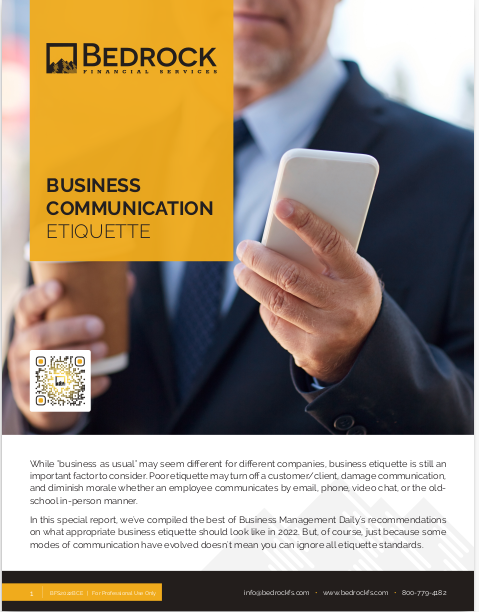Key Takeaways
-
Simply using a CRM isn’t enough—how you organize, automate, and follow through determines if it fuels growth or just becomes digital clutter.
-
CRMs can become your most powerful referral engine when used to build personalized, timely, and proactive client communication routines.
Why CRM Usage Doesn’t Always Translate to Growth
Most financial professionals today have some type of CRM software in place. It’s become a standard tool of the trade—much like having a business card or an email address. But owning a CRM is not the same as leveraging it to increase revenue, deepen client trust, or generate referrals.
Many agents fall into the trap of passive CRM use: uploading a contact, scheduling an occasional reminder, and letting the system collect digital dust. The difference between stagnant growth and a thriving practice often lies in the discipline, creativity, and strategy behind how you use your CRM.
The Growth-Focused Mindset Behind CRM Success
CRMs don’t grow your business on their own. They require a growth-oriented strategy. That starts with how you approach your data:
-
Treat your CRM like a living system, not a filing cabinet. Update it consistently with fresh notes, preferences, milestones, and next steps.
-
Segment your contacts meaningfully—by client stage, product interest, communication preference, and even referral likelihood.
-
Design workflows with specific client outcomes in mind—like policy reviews, birthday calls, renewal prep, or annual financial check-ins.
In 2025, automation and AI features are embedded into most CRMs. But they only become assets when they are used with intention.
1. Systematize Every Stage of Your Client Journey
To convert your CRM into a true growth tool, map every touchpoint from lead to long-term client. Then embed those touchpoints directly into the system.
-
Initial contact: Trigger automated emails or texts when a new prospect is added. Set follow-up reminders every 48–72 hours until you connect.
-
First meeting prep: Store notes, questions, and key pain points to personalize your first impression.
-
Proposal delivery: Use CRM tasks and checklists to ensure every prospect receives a timely, detailed proposal with follow-up.
-
Post-sale onboarding: Set up a multi-step onboarding series in your CRM to walk clients through next steps and set expectations.
-
Ongoing maintenance: Schedule review calls every 6 or 12 months. Automate milestone messages (anniversaries, birthdays, renewals).
The more structured your process, the easier it is to scale while maintaining a high level of service.
2. Use Automation to Reinforce Human Touch
Automation isn’t meant to replace relationships—it’s meant to make them more consistent. Your CRM can send messages on your behalf, but only you can create the message that makes a client feel known and valued.
Use automation for:
-
Appointment confirmations and reminders
-
Thank-you messages after meetings or policy activations
-
Educational newsletters personalized by interest segment
-
Re-engagement prompts for dormant leads
Combine this with personal outreach. For example, if your CRM reminds you that a client’s policy is up for review next week, call them yourself—even if the email reminder already went out.
3. Build a Follow-Up Culture (Not Just a System)
Follow-up is where many agents lose momentum. Your CRM should enforce—not just support—regular follow-up behaviors.
You can:
-
Set rules so no lead stays untouched for more than 3 days
-
Create weekly dashboards that highlight inactive prospects
-
Track which clients haven’t had a review call in the last 6 months
-
Build a referral outreach cadence for your most satisfied clients
Growth doesn’t come from making the first call. It comes from making the 4th, the 5th, and the 6th at the right time, with the right message.
4. Monitor Metrics That Lead to Referrals
Your CRM can be a predictive engine for referrals—if you track the right data. In 2025, it’s essential to move beyond basic metrics like open rates or total leads.
Start paying attention to:
-
Net Promoter Scores (NPS) and satisfaction feedback
-
Response times from your team to client inquiries
-
Engagement history, including content opens and clicks
-
Policy anniversaries, claim updates, or benefit usage
Clients refer when they feel supported, educated, and remembered. Your CRM can help identify those moments—but only if you’ve built in the fields and tracking systems to catch them.
5. Create a Referral Workflow That Feels Natural
Referrals aren’t earned passively. They are the result of consistent, intentional client experiences. A referral-generating CRM supports that process by making it easy to ask, follow up, and reward.
Here’s how to build one:
-
Tag highly satisfied clients as potential referrers
-
Trigger outreach 30 days after onboarding or policy activation
-
Use automation to share your referral request or client review links
-
Track sources of new clients inside the CRM
-
Celebrate and thank referrers with handwritten notes or loyalty perks
Every time a client completes a key milestone—like a claim resolution, policy upgrade, or yearly review—it’s a chance to ask for a referral.
6. Clean Data = Clear Decisions
A messy CRM can cause more harm than help. Inaccurate, outdated, or duplicated information leads to missed opportunities and marketing fatigue.
You should:
-
Review and clean your CRM data monthly
-
Merge duplicate records promptly
-
Standardize fields for consistency (e.g., using dropdowns, not free text)
-
Assign every contact to an owner for accountability
Clear, reliable data enables smarter segmenting, better timing, and more personalized client communication.
7. Train Your Team to Use It the Same Way
Your CRM is only as strong as your weakest user. If you work with a team, consistency is key.
Standardize your team’s use of the system:
-
Shared note templates and entry guidelines
-
Defined task naming and tagging conventions
-
Mandatory fields for each contact or case
-
Weekly reviews of pipeline status and CRM usage
Consider hosting monthly 30-minute training or refresh sessions. A consistent CRM culture reduces confusion and boosts performance.
8. Leverage CRM Reports to Adjust Your Strategy
You’re not just managing relationships—you’re measuring them. CRMs in 2025 offer robust reporting features that help you identify what’s working and what’s not.
Use your CRM reports to track:
-
How long it takes to convert a lead
-
Where most of your referrals are coming from
-
Which team member is closing the most deals
-
Drop-off points in your sales or onboarding pipeline
Let your data guide how you refine scripts, adjust outreach timing, or focus your resources.
9. Use Notes to Capture More Than Just Numbers
Data is useful, but stories build trust. When you write notes after a client interaction, go beyond the surface:
-
What did they care most about?
-
What concerns came up repeatedly?
-
What’s going on in their personal life?
Tag these insights in your CRM so you can bring them up later. Personalized service stems from recalling what matters most to the client—even if months have passed.
10. Future-Proof Your CRM Strategy
As regulations, client expectations, and technologies evolve, your CRM strategy needs to adapt.
In 2025 and beyond:
-
Make sure your CRM is integrated with compliance systems
-
Stay updated on client privacy and data storage laws
-
Evaluate new CRM features like predictive AI suggestions and voice memo transcription
-
Review your workflows quarterly to ensure alignment with your client experience goals
Don’t let your CRM strategy age out. Treat it like an evolving system that gets smarter and sharper with time.
Drive Growth and Referrals With Consistent CRM Habits
The difference between a CRM that sits on your desktop and one that drives exponential growth is how consistently—and creatively—you use it.
You don’t need a new platform. You need a better playbook. One that includes automation with intention, systems that serve relationships, and data that drives personal follow-up.
If you’re ready to build better client experiences, generate steady referrals, and get more from your CRM, it’s time to level up your systems.
Sign up with Bedrock Financial Services—we help professionals like you unlock the full potential of your tools. From training to automation to lead generation, we provide the backend support that frees you up to do what you do best: build relationships that last.







